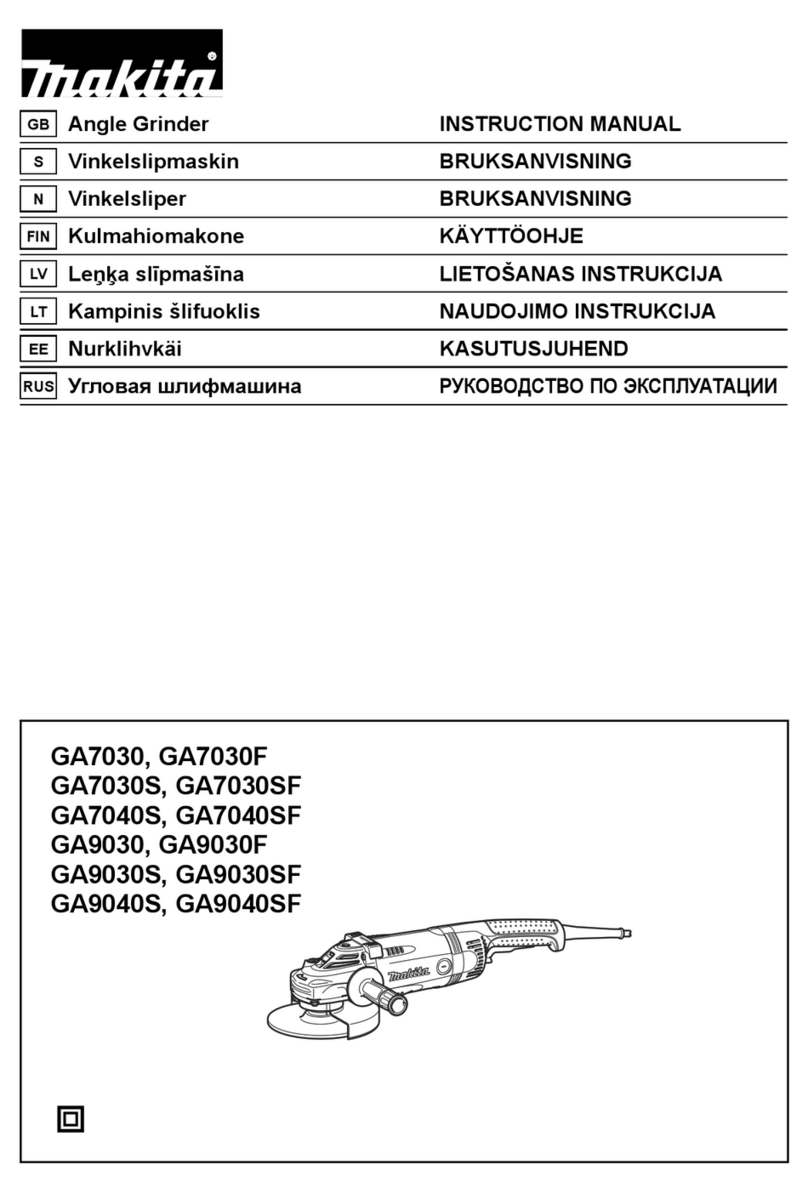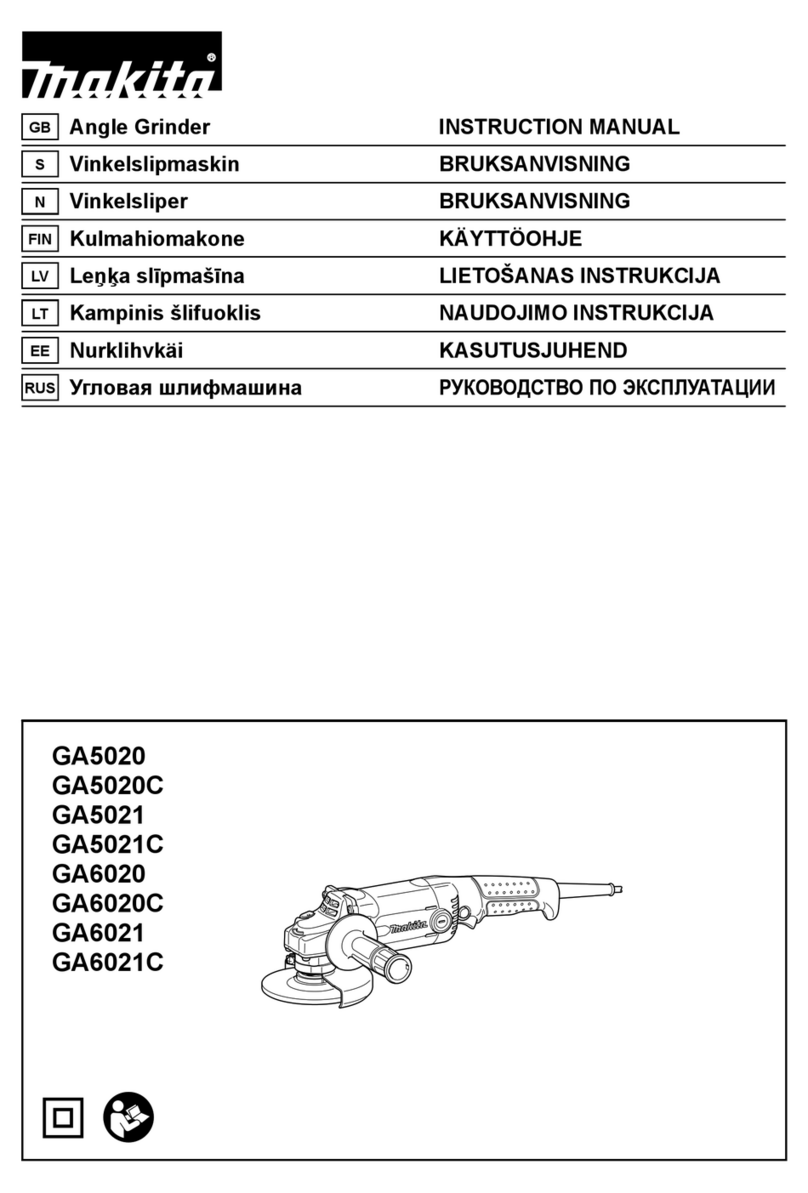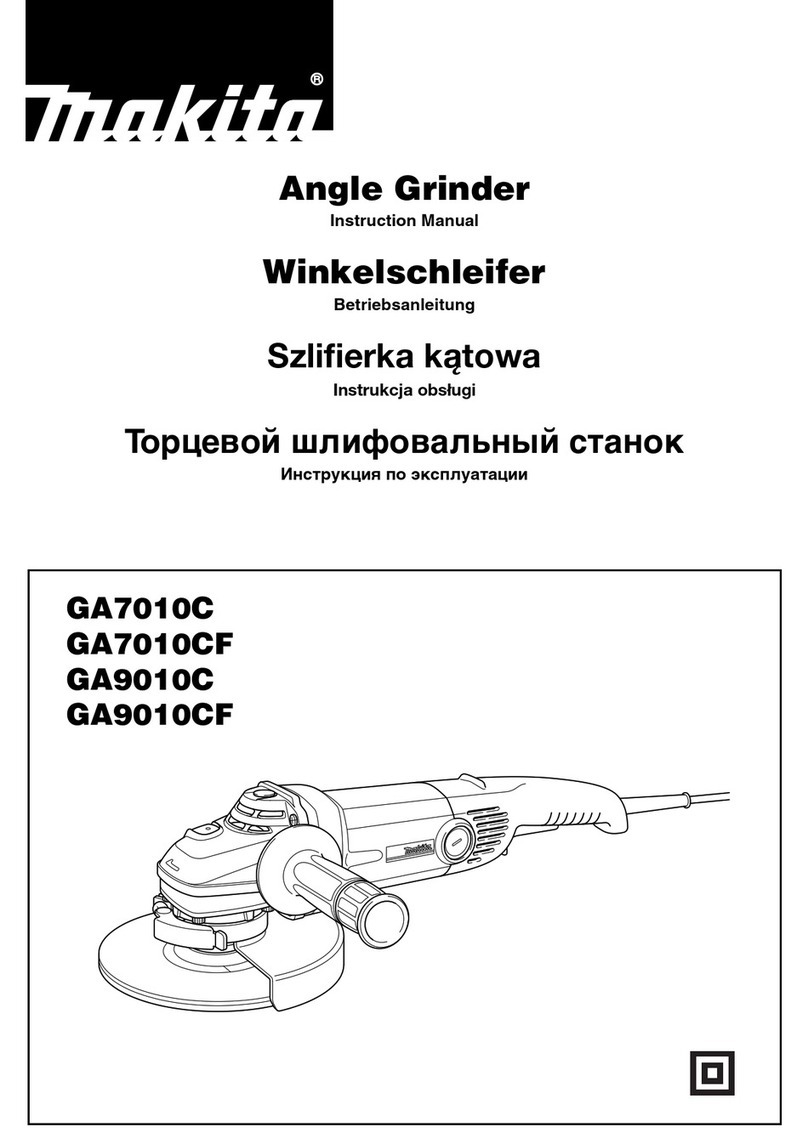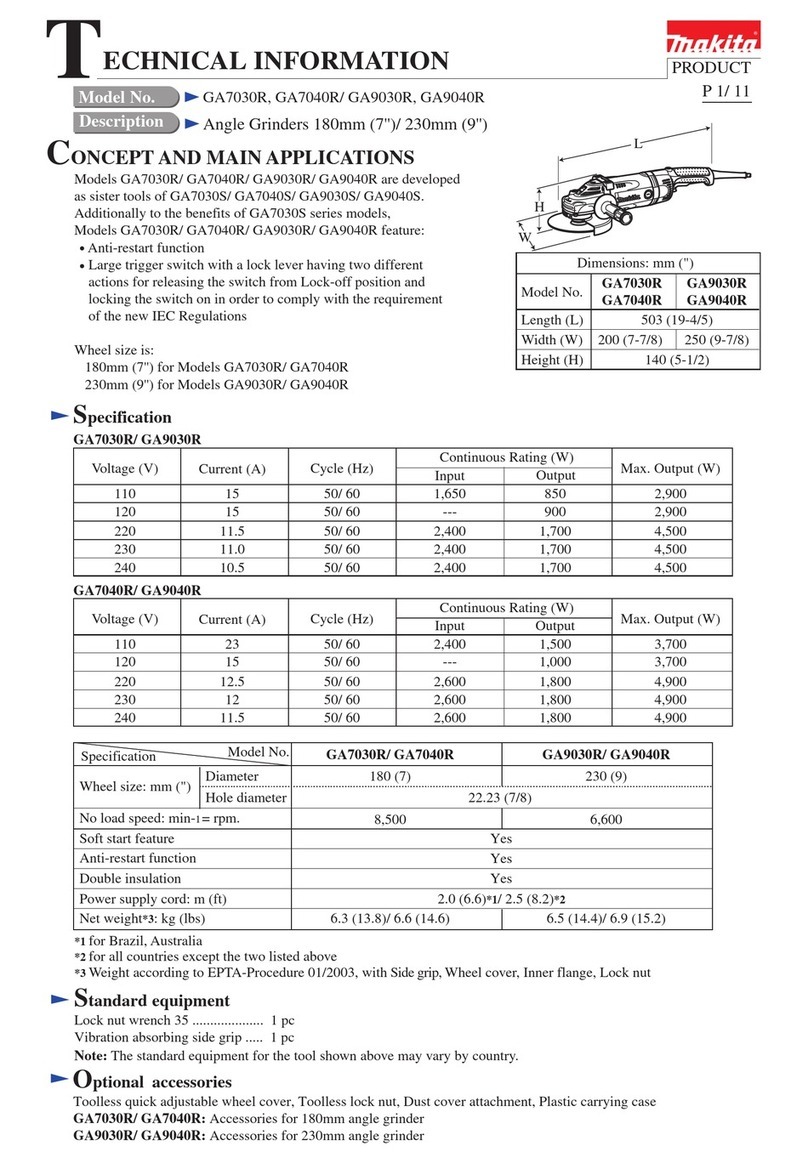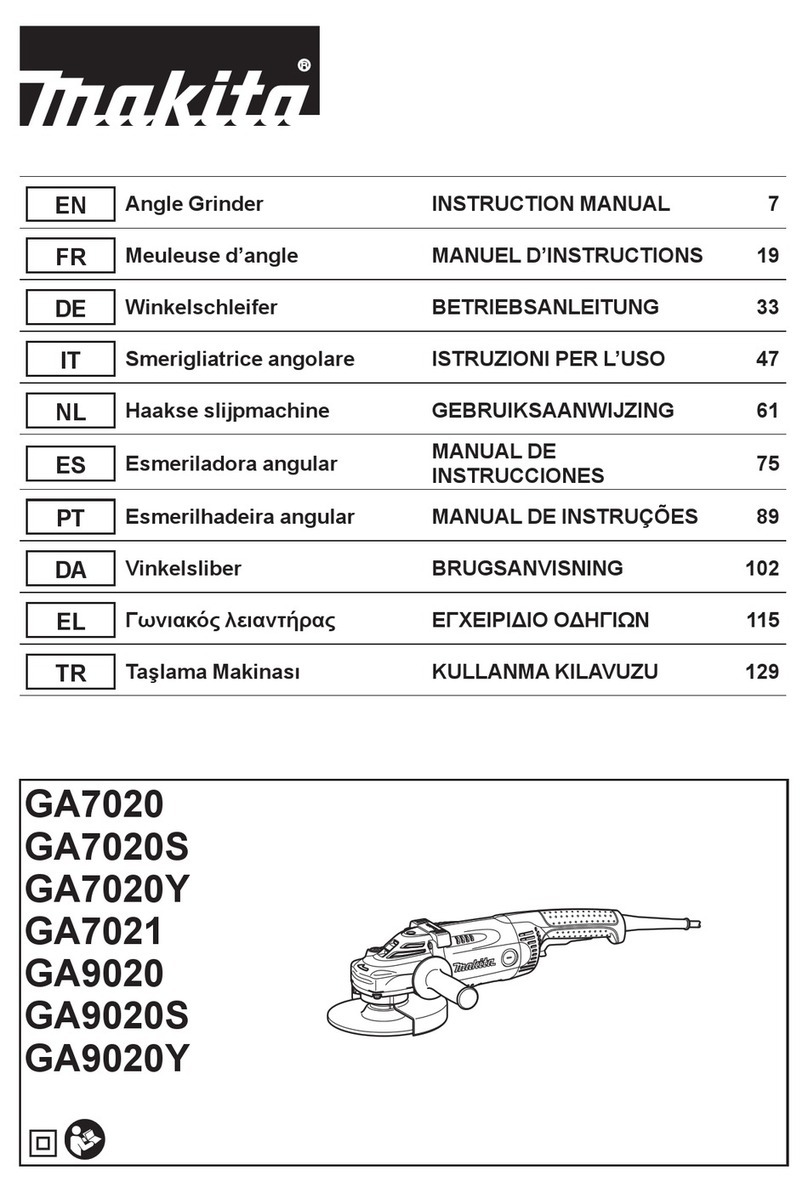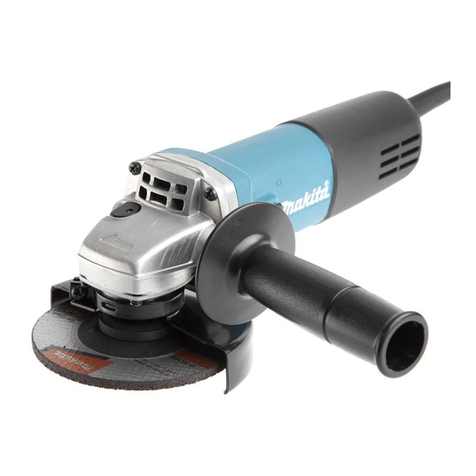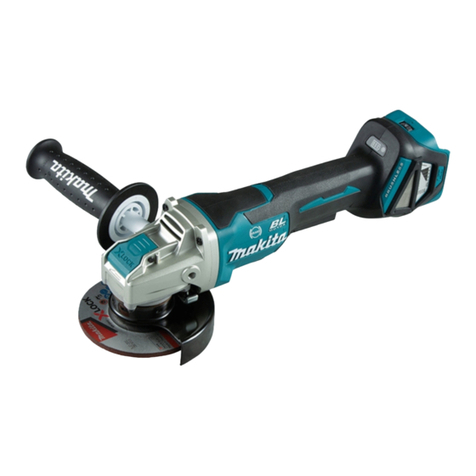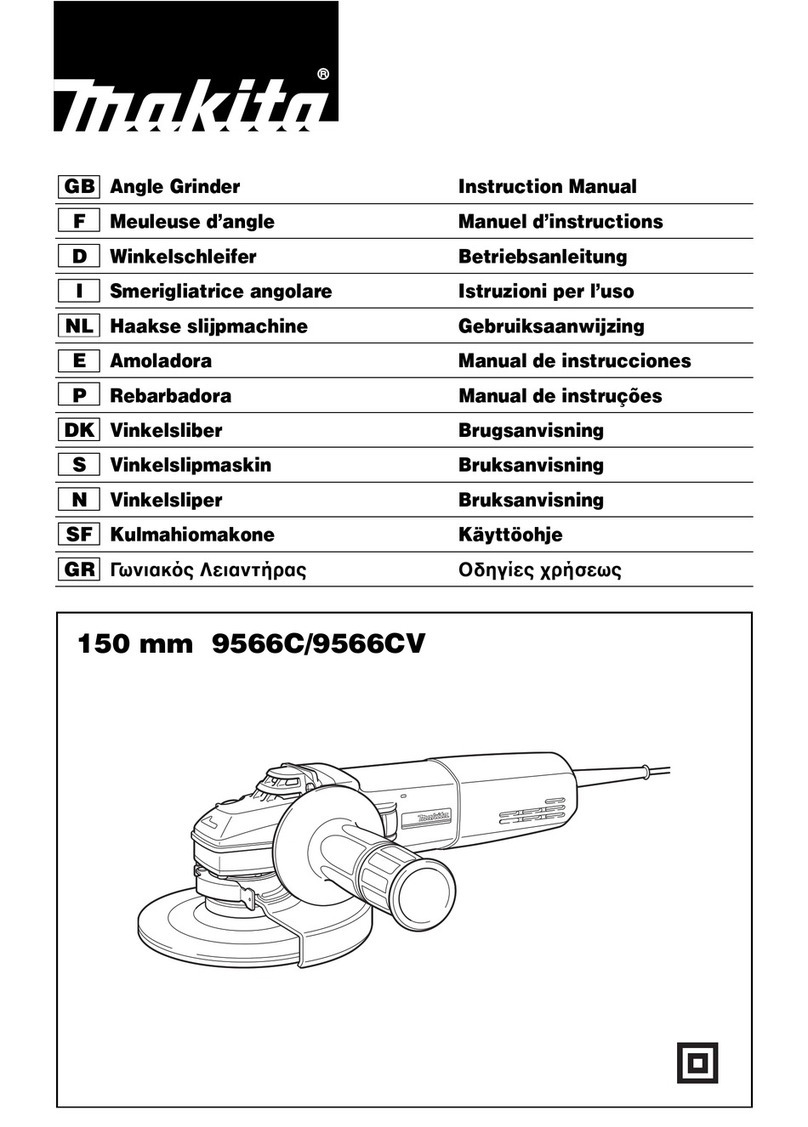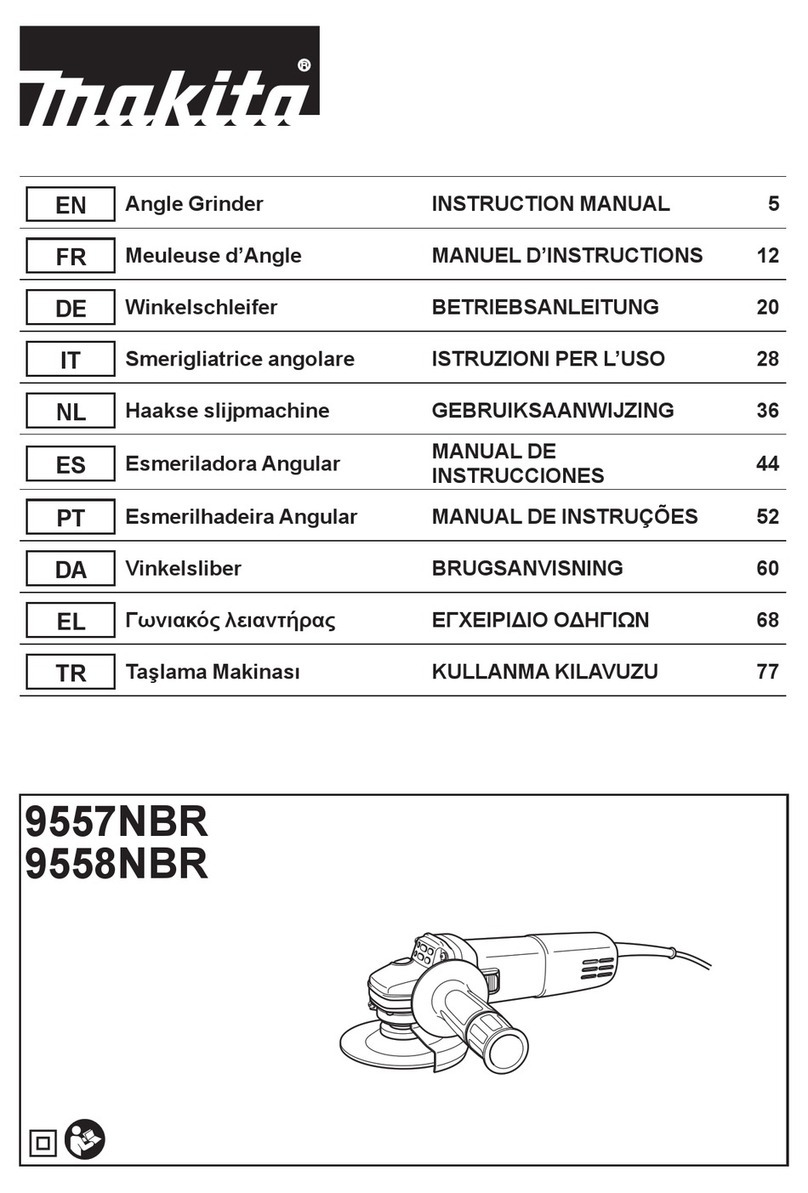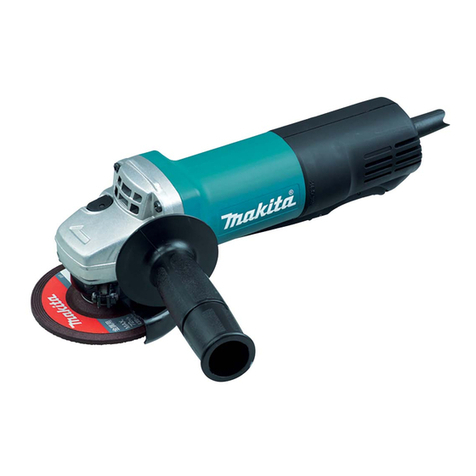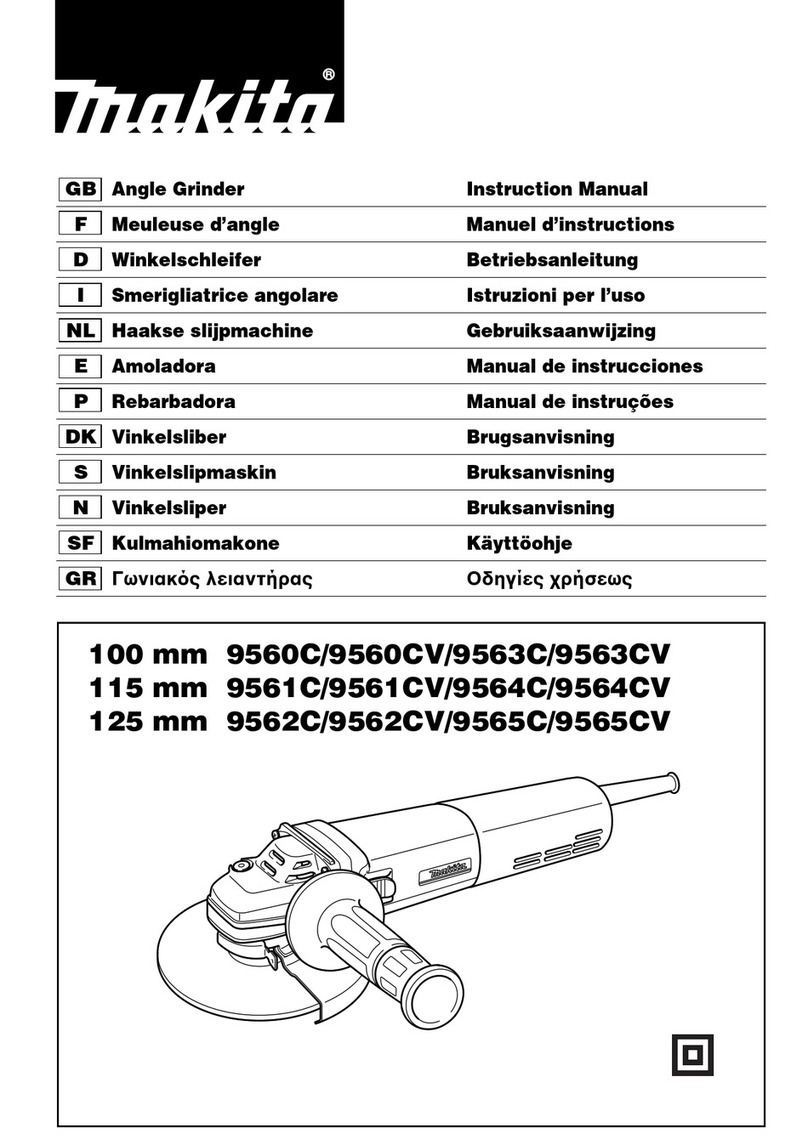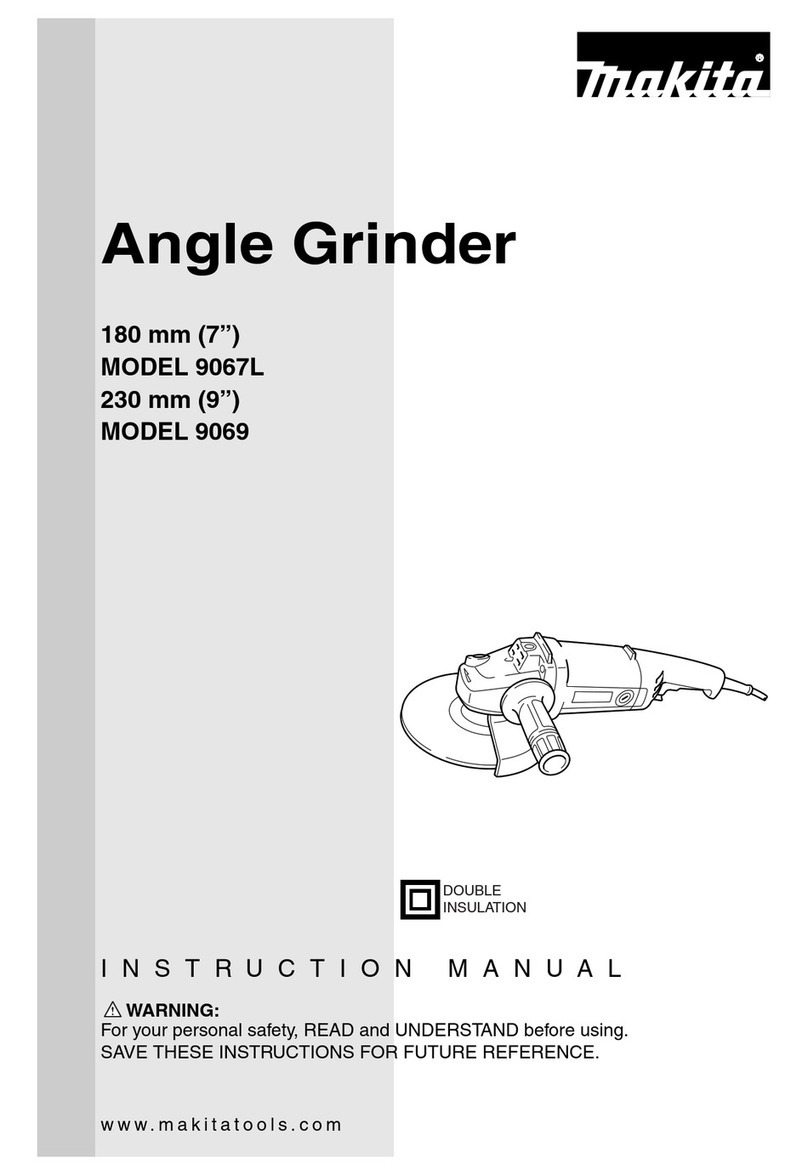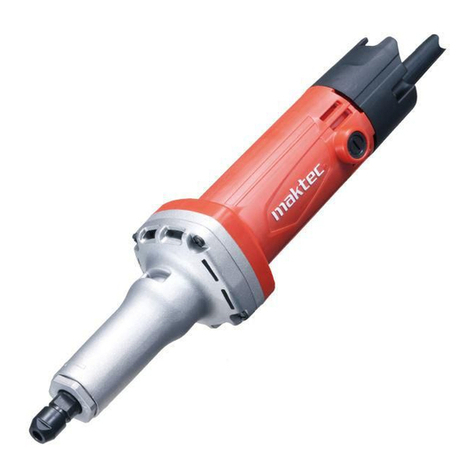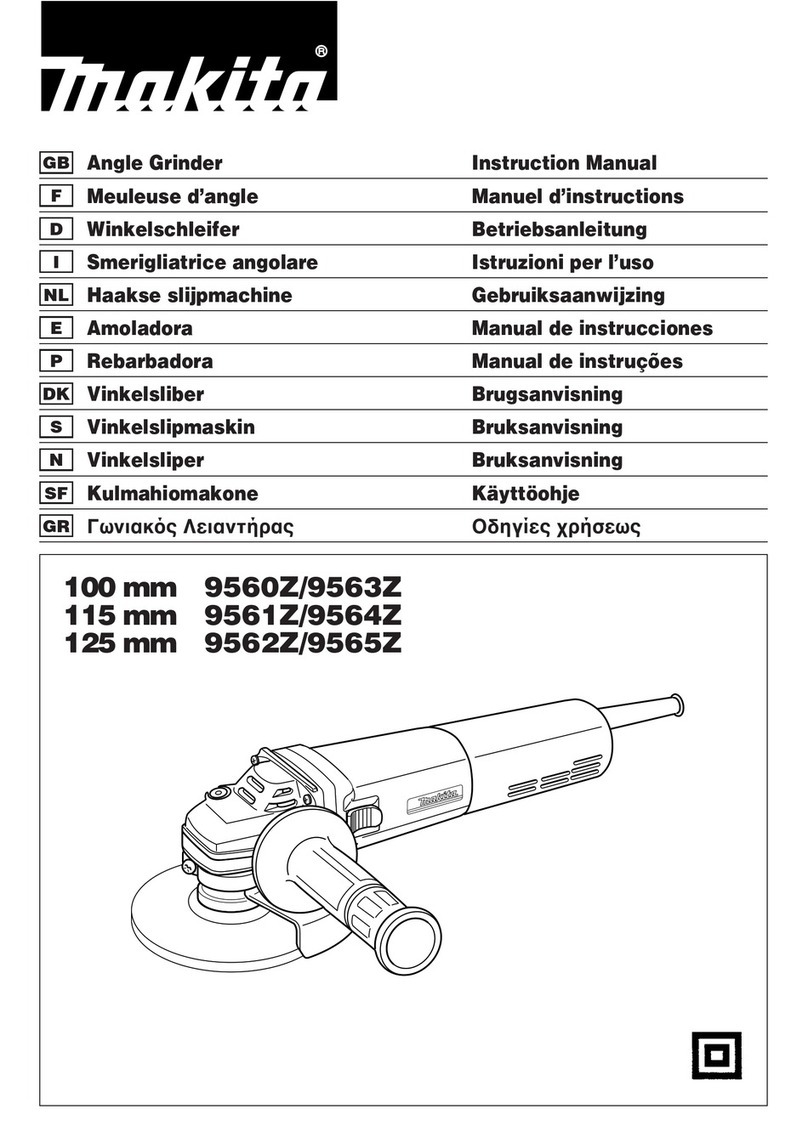
6
6. The arbour size of accessories must properly fit
the collet of the power tool. Accessories that do not
match the mounting hardware of the power tool will
run out of balance, vibrate excessivel and ma cause
loss of control.
7. Mandrel mounted accessories must be fully
inserted into the collet or chuck. If the mandrel is
insufficientl held and/or the overhang of the wheel is
too long, the mounted accessor ma become loose
and be ejected at high velocit .
8. o not use a damaged accessory. Before each use
inspect the accessory such as abrasive wheels for
chips and cracks. If power tool or accessory is
dropped, inspect for damage or install an
undamaged accessory. After inspecting and
installing an accessory, position yourself and
bystanders away from the plane of the rotating
accessory and run the power tool at maximum no-
load speed for one minute. Damaged accessories
will normall break apart during this test time.
9. Wear personal protective equipment. epending
on application, use face shield, safety goggles or
safety glasses. As appropriate, wear dust mask,
hearing protectors, gloves and workshop apron
capable of stopping small abrasive or workpiece
fragments. The e e protection must be capable of
stopping fl ing debris generated b various
operations. The dust mask or respirator must be
capable of filtrating particles generated b our
operation. Prolonged exposure to high intensit noise
ma cause hearing loss.
10. Keep bystanders a safe distance away from work
area. Anyone entering the work area must wear
personal protective equipment. Fragments of
workpiece or of a broken accessor ma fl awa and
cause injur be ond immediate area of operation.
11. Hold the power tool by insulated gripping surfaces
only, when performing an operation where the
cutting tool may contact hidden wiring. Cutting
accessor contacting a “live” wire ma make exposed
metal parts of the power tool “live” and could give the
operator an electric shock.
12. Always hold the tool firmly in your hand(s) during
the start-up. The reaction torque of the motor, as it
accelerates to full speed, can cause the tool to twist.
13. Use clamps to support workpiece whenever
practical. Never hold a small workpiece in one
hand and the tool in the other hand while in use.
Clamping a small workpiece allows ou to use our
hand(s) to control the tool. Round material such as
dowel rods, pipes or tubing have a tendenc to roll
while being cut, and ma cause the bit to bind or jump
toward ou.
14. Never lay the power tool down until the accessory
has come to a complete stop. The spinning
accessor ma grab the surface and pull the power
tool out of our control.
15. After changing the bits or making any
adjustments, make sure the collet nut, chuck or
any other adjustment devices are securely
tightened. Loose adjustment devices can
unexpectedl shift, causing loss of control, loose
rotating components will be violentl thrown.
16. o not run the power tool while carrying it at your
side. Accidental contact with the spinning accessor
could snag our clothing, pulling the accessor into
our bod .
17. Regularly clean the power tool’s air vents. The
motor’s fan will draw the dust inside the housing and
excessive accumulation of powdered metal ma
cause electrical hazards.
18. o not operate the power tool near flammable
materials. Sparks could ignite these materials.
19. o not use accessories that require liquid
coolants. Using water or other liquid coolants ma
result in electrocution or shock.
Kickback and Related Warnings
Kickback is a sudden reaction to a pinched or snagged
rotating accessor . Pinching or snagging causes rapid
stalling of the rotating accessor which in turn causes the
uncontrolled power tool to be forced in the direction
opposite of the accessor ’s rotation.
For example, if an abrasive wheel is snagged or pinched
b the workpiece, the edge of the wheel that is entering
into the pinch point can dig into the surface of the material
causing the wheel to climb out or kick out. The wheel ma
either jump toward or awa from the operator, depending
on direction of the wheel’s movement at the point of
pinching. Abrasive wheels ma also break under these
conditions.
Kickback is the result of power tool misuse and/or
incorrect operating procedures or conditions and can be
avoided b taking proper precautions as given below.
a) Maintain a firm grip on the power tool and
position your body and arm to allow you to resist
kickback forces. The operator can control kickback
forces, if proper precautions are taken.
b) Use special care when working corners, sharp
edges etc. Avoid bouncing and snagging the
accessory. Corners, sharp edges or bouncing have
a tendenc to snag the rotating accessor and cause
loss of control or kickback.
c) o not attach a toothed saw blade. Such blades
create frequent kickback and loss of control.
d) Always feed the bit into the material in the
same direction as the cutting edge is exiting from
the material (which is the same direction as the
chips are thrown). Feeding the tool in the wrong
direction causes the cutting edge of the bit to climb
out of the work and pull the tool in the direction of this
feed.
Safety Warnings Specific for Grinding:
a) Use only wheel types that are recommended
for your power tool and only for recommended
applications.
Additional Safety Warnings:
20. The tool is intended for use with bonded abrasive
wheel points (grinding stones) permanently
mounted on plain, unthreaded mandrel (shanks).
21. Make sure the wheel is not contacting the
workpiece before the switch is turned on.
22. Before using the tool on an actual workpiece, let it
run for a while. Watch for vibration or wobbling
that could indicate poor installation or a poorly
balanced wheel.

